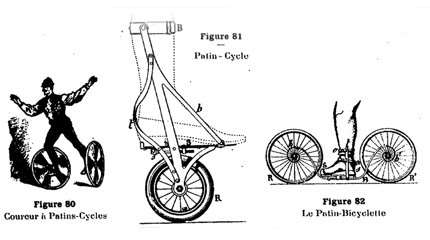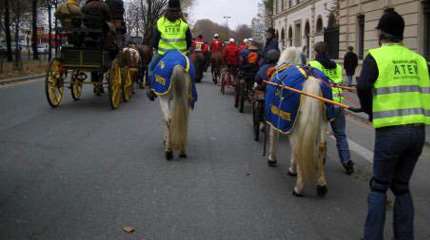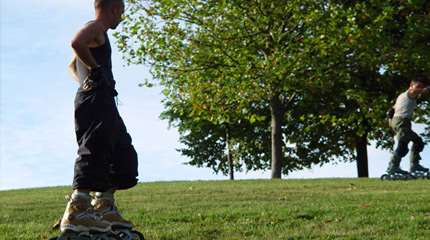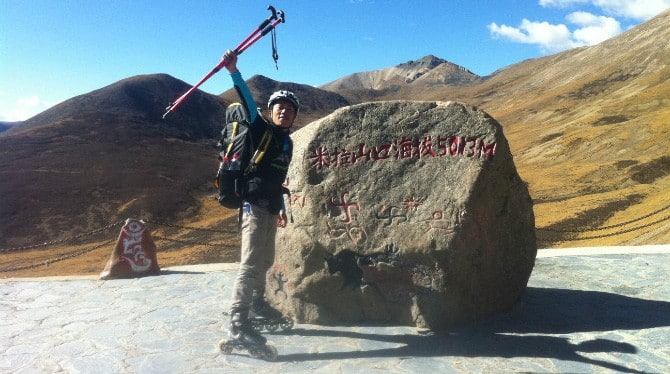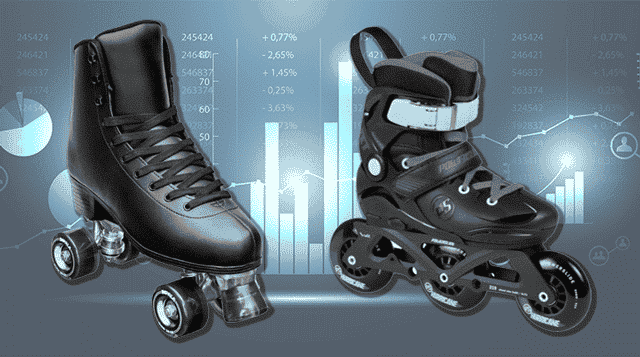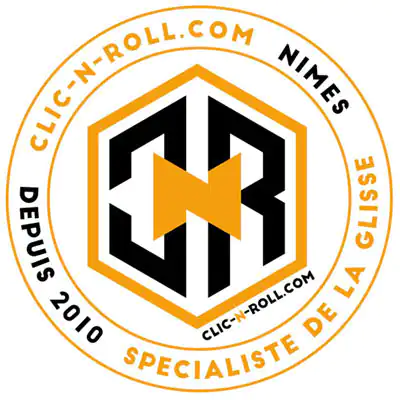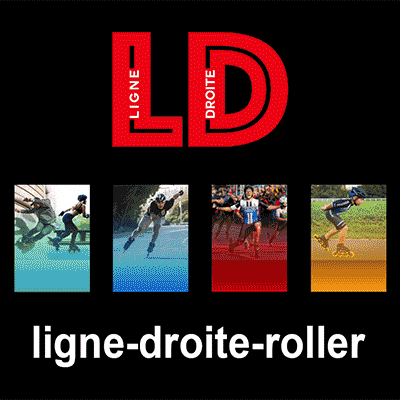What future for All-Terrain Skating? Evolutions and development perspectives
Par alfathor |
Publié le 4 December 2010 |
Mis à jour le 12 April 2023 |
Catégories :
Off-road skatingToutes | Sous-catégories : Roller et sociétéThe place of rollerskating in our societies
| 79681
| Tags :
off-road skatingsuv
In 2004, we were already mentioning the potential come-back of All-Terrain Skating. A few clubs and skating coaches were offering to discover that discipline off the beaten tracks with skates found on the Internet. What about today?
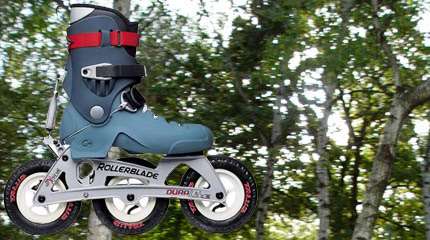
Evolution of the All-Terrain Skating practice
Skates have become a full-fledged element of the urban landscape. Skaters are often spotted, going from sidewalks to roads, slaloming and snaking in and out between passers-by and phone boxes. On the other hand, seeing them skating along hillsides or foothills is far less common. It is yet a possibility thanks to a new type of equipment, half-way between skis and mountain bikes: All-Terrain Skates.
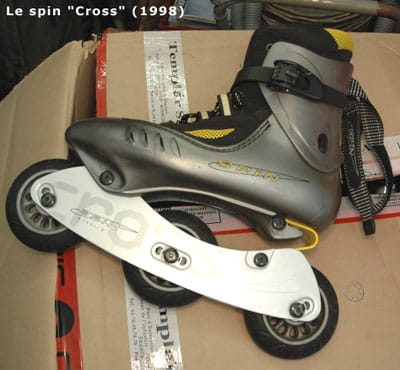
“You may talk about all-terrain skating when you refer to surfaces that generally cannot be crossed with inline skates.” (2)
Skating: All-terrain by essence
Skates with aligned wheels would have been born in 1760. Let’s say that they were all-terrain skates by essence, since paths of the time didn’t offer the rolling qualities of today’s surfaces. Skaters had to make do with difficult surfaces.
Then came indoors practice with skating rinks, for want of practice places and suitable technological solutions.
The idea went on its way in 1789 in France, with Maximiliaan Lodewijik Van Lede, the medalist of the Paris Academy, and his “ground skates” which enabled to cover distances on flat land as fast as on ice.
The cycle-skate shift
The end of the 19th C. and the beginning of the 20th C. were marked by the arrival of cycle-skates with structures close to those of axle skates or inline skates (see video below).
Their creation answered the need of skating on any type of surface, and already prefigured contemporary all-terrain skates, particularly with the use of rubber wheels or tires (see video below).
Rollerblade and the legendary Coyotes
Born in 1997, the Coyotes opened a new path for the skating market. They showed that you could practice off the beaten tracks. Laustino Luccetta (Rollerblade) even promoted them on TV in 1998 in a report broadcasted by French Channel M6.
Since then, other brands gave it a try, like Spin with the Cross model.
All-Terrain Skating according to Rollerblade: a well-thought marketing strategy
Let’s make a slight digression towards marking in order to partly explain the rebirth of all-terrain skating in the 90’s…
Manufacturers use several strategies to maintain their sales and/or increase their market shares. The aim is to extend the length of a product’s life cycle in order to get the maximum benefits from it:
– Big brands offer innovating products, technologically more complex, to which the added value is increased.
– They vary uses with new products. The arrival of All-Terrain Skating increased even more the number of practice means and follows/fits into that logic, creating a need and/or trying to answer to new consumer expectations.
The Coyotes: A true innovation or a mere communication vector?
Rollerblade was the first brand to communicate on All-Terrain Skating. ATS was used as a real communication tool and as a notoriety vector for the brand. Let’s mention “BLADE CROSS”, an advertising campaign with all-terrain skaters skating along the woods and hills of Colorado.
The Coyote became the ambassador of the brand.
With hindsight, Rollerblade’s advertising campaigns seem excessive compared to the sales made on the all-terrain segment. We realize that the product was above all used as a figurehead of Rollerblade’s communication: it’s a technical product, innovating and original, displaying a know-how that very few brands mastered at the time.
We also realize today that the Coyote was much more than a mere marketing argument, more than just a foil. It remains one of the most wanted all-terrain skates on the Internet by off-piste downhill lovers or for traction skating. Proof is that there has never been a real gap between prices for new and second-hand pairs. Rarity artificially maintains the high rate of the Coyote. The arrival of an alternative may well set up a new deal.
Why didn’t All-Terrain Skating boom in the 90’s?
Skates were technically too demanding and too expensive for the time: when the first models of modern all-terrain skates saw the light at the end of the 90’s, the market didn’t seem to be ready and skaters were not experienced enough to adopt that practice. It was more seen as a game than as a real sport.
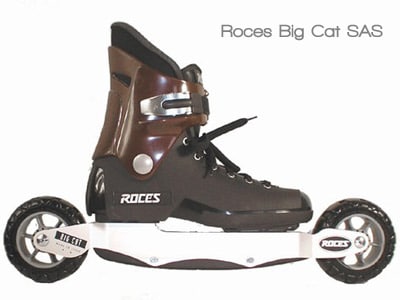
- 2500 Francs, i.e. almost 380€ for a pair of Coyotes;
- 2000 Francs, i.e. 300€ for a pair of Spin Cross Skates.
In 1999, Decathlon only sold 200 pairs of these unusual skates. Followed the complete stop of the manufacturing of the Coyotes, the key-model of Rollerblade.
The practice survived until today due to a few enthusiasts searching the Internet for second-hand skates. They stock up across the whole world, especially in Canada and in the US. So that there is inflation in the shops selling those products. They can sometimes be found at prices as high as when they were first launched on the market.
Few brands have given a go at All-Terrain Skating
Only 9% of the brands present on the market would offer that type of products at the beginning of the 2000’s. Let’s particularly remember Roces with the Big Cat SAS, Spin with the Cross and its 90 mm grooved wheels, and Rollerblade with the Coyote.
Let’s remind that 15 millions of inline skate pairs were sold in the world in 1997 (1). In 1999 on the French market only, 2 millions of skates were sold.
A market segmenting over the years
The industrial-scale production of inline skates progressively led to the segmentation of supply: due to economies of scale, products diversified. Competition also forced manufacturers to innovate in order to differentiate themselves and keep their positions on the market. Technological solutions emerged and enabled to answer to the most various aspirations.
Two technological logics confront each other on the all-terrain skating market:
- Coyote-type models with three wheels under the boot, like the Spin Cross;
- Ski-type models such as the one developed by Roces, the Big Cat SAS.
Those two different conceptions still exist today. In fact, they don’t answer to the same aspirations nor to the same customer bases.
Innovation: a necessary dynamic on the skating market
Little by little, skate sales slowed down until they reached a plateau over the last years. The market gathered, brands absorbed one another or disappeared. Since the early 2000’s, the skating market tends to stagnate. Skaters are equipped, most of the sales are about skates or spare parts renewal.
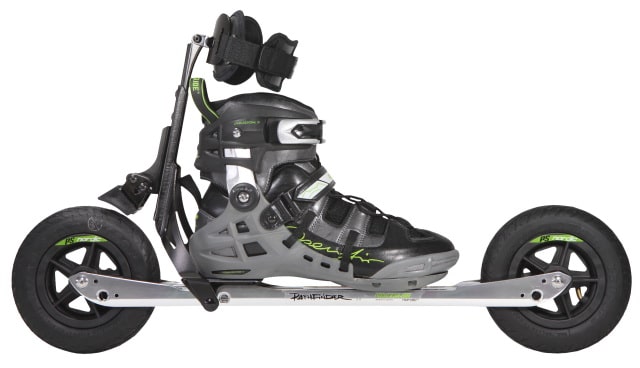
There is only one efficient solution to reinvigorate the market: Innovation.
Innovation may consist in creating a new type of equipment or new practice means. It is what happened with Freeskating during the last days of Salomon. And that’s what can have been observed with Nordic-Skating and All-Terrain Skating lately…
Nordic-Skating, an air bubble for All-Terrain Skating
Several firms opted for a design closer to that of a roller-ski, particularly:
- Roces with the Big Cat SAS;
- Trailskate with tire skis;
- Powerslide with the Nordic ranges (Cross-Trainer, XC Path…);
- And more recently Cadomotus with the Nordic Scouts.
A practice progressively emerged over the years: Nordic Skating. It is based on a model of skates that is closer to skis than to skates so-to-speak. It meets with a great success in Germany with cross-country skiers who can train whatever the season. Here it’s about sports use for competition preparation and training reasons.
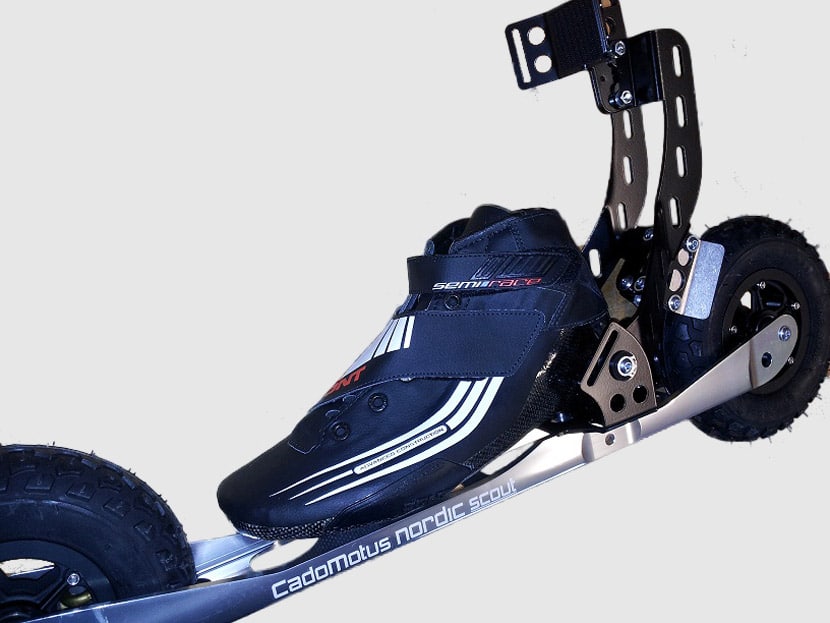
Cadomotus ventured on rugged terrains in offering a Nordic Scout frame, equipped with 200 mm wheels, just like the Trail skate, with an axle spacing of 195 mm. That equipment has a brake that is quite similar to what can be found on the Skike.
The Powerslide Vi SUV burst
In 2012, the German brand finally did it again with the much talked-about Vi SUV, a skate with features similar to those of the Coyote, but benefiting from many technological improvements: a much lighter weight, a greater handiness, a price equivalent to that of 1997 but in agreement with today’s vision of skating…
The reasons of the forecasted come-back of all-terrain skating
Several factors may explain the emergence of modern All-Terrain Skating in the middle of the 90’s.
Today, all the conditions are met for All-Terrain Skating to develop. It is still a practice rather destined to an elite, but the number of potential skaters able to handle that type of equipment has considerably increased. The fact that a big firm like Powerslide invests in such a product, and in such a niche, shows that eventually there may be an economic profitability for manufacturers to do so.
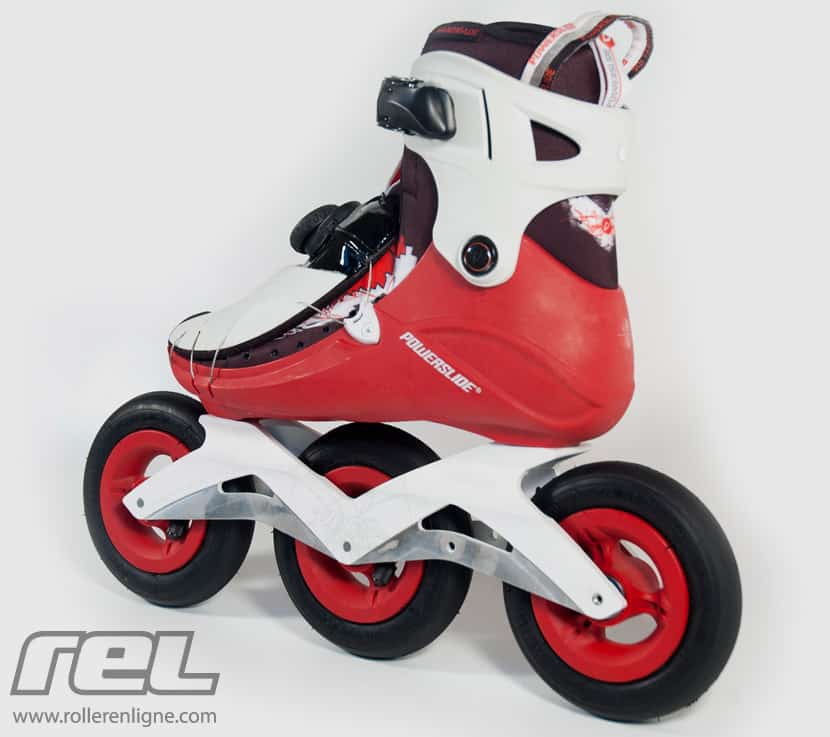
The impact of social evolutions
First of all, there is a favorable general sociologic conjuncture: the birth of the ecologist movement, the development of physical activities, the increase of leisure time…
Skaters want to leave the asphyxiating air of cities and revive the true essence of their sport, the open air. Skating has remained penned into cities and rinks for too long.
That phenomenon can also be observed through the multiplication of inter-city treks and the practice of long-distance skating.
The call of the great outdoors
Then, inline skating and particularly ATS answer to the adventurous aspirations of a handful of thrill seekers. It brings you back into your natural environment, enables you to confront the unknown, adventure, the absence of rules, engagement and risk.
ATS fits into the issue of sports adventure (Loret, 1995; Pociello, 1999), and of risk seeking (Le Breton, 1995).
Pleasure above all!
All-Terrain Skaters would mostly be young urban graduated people, hedonists open to the “outside”, to fads, to news and in search of autonomous mobility, of decision-making power, “in the permanent quest of pleasure, excitement, thrills, and of intense, even ‘extreme’ sensations (2) “.
The weight of technological innovation
Those aspirations are combined with the arrival of technological innovations on the market, favoring the practice, like the Powerslide Vi SUV. Let’s note the lighter and better designed magnesium frames, the more precise tightening systems, the use of composites…
The price variable is not as determining as it used to be. Today, skaters are ready to invest in their equipment up to 400€, because the image of skating progressively shifts from ‘toy’ to ‘real sports instrument’.
A change in the means of practice
The practice of all-terrain skating has evolved. With the Coyotes, it was close to skiing: skaters were constantly looking for new slopes to draw new lines. Their weight was a limiting factor.
Today, playing fields get wider thanks to the weight loss. The practice is still about downhill, but flat grounds are opening new possibilities. The practice gets closer to mountain biking.
Traction practices, a development vector
All-terrain skates are still heavy and cumbersome, and lots of skaters have turned towards traction practices. Most videos that can be found on the Internet show skaters harnessed with traction kites, kite wings, horses, sled dogs… Once freed from the laborious dimension of propulsion, the outdoors become infinite playing fields.
The sports dimension shouldn’t be neglected
Another means of practice emerges in Nordic countries, training with sticks. Just like roller skiing on road, that may be an alternative to Coyote-type all-terrain skating.
The physical and sports dimension shouldn’t be neglected either. In Germany, people with all-terrain skates use them for cross-country skating just like skiers. It’s quite common to see them equipped with sticks too.
All-path skating, a viable alternative?
There is another field that remains untapped but quite promising according to its alternative dimension: all-path skating.
All-path skaters seem to be more interested in practicing on all types of hard grounds with hybrid skates, half-way between fitness and all-terrain skates.
The Landroller brand tried to venture on that market with skates equipped with two tilted side wheels with large diameters, but the results of the experiment were quite mitigated.
Even if the principle of side wheels offered a better stability while keeping a great rolling comfort due to the wheels’ big diameter, the lateral tilting made the skating technique more complex. Not to mention the wear of the wheel rubbers. As it is, those skates lack so much support that they are uninteresting. Moreover, their wheels are so thin and fragile that they get stuck in the ground.
The Landrollers may have been an interesting alternative if the concept had been pushed further.
Once again, Powerslide found an interesting alternative with the SUV, despite a higher center of gravity. To conclude, as far as all-path skating is concerned, technological solutions exist. That equipment offer a greater flexibility of use (city or countryside paths).
Other possibilities of development exist
Several other factors would be likely to help developing all-terrain skating, like the adding of an ATS competition during multi-sports treks for example. That practice has been booming since the early 2000’s. Professional teams and world series have got organized.
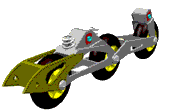
Moreover, all-terrain skating could be imagined as a complementary offer for ski stations during the summertime. The latters were interested by the Coyote in the 90’s by the way, for mountain tourism, the creation or the implication of clubs, even of the federation into the discipline through downhill skating.
Inline skating has been trying to find its way inside and beyond cities for more than two centuries now. Manufacturers have satisfying and doable technological solutions for the development of products suitable for mixed uses. All they have to do is to push further West and conquer new markets.
Notes
(1) Website of the “Lettre du Sport”, Wed. Oct. 14, 1998.
(2) Rollerblade; 1998-1999 press file, Alexandre Chartier – Université Paris XI Orsay – Division S.T.A.P.S. – DESS “International Management of Sports” – 2000-2001.
Links
Test: Comparing the Powerslide Vi SUV and the Rollerblade Coyote
Marketing study on inline skating
The decline of the skating market (1999)
By Alfathor – Translation: Chloe Seyres – Photos: Alfathor, Sébastien Henry and all rights reserved
Auteur
Alexandre Chartier
''alfathor''
Alexandre est le fondateur et webmaster de rollerenligne.com depuis 2003. C'est un passionné de roller en général, tant en patin traditionnel qu'en roller en ligne. Il aime le patinage à roulettes sous tous ses aspects : histoire, économie, sociologie, évolution technologique... Aspirine et/ou café recommandés si vous abordez un de ces sujets !

